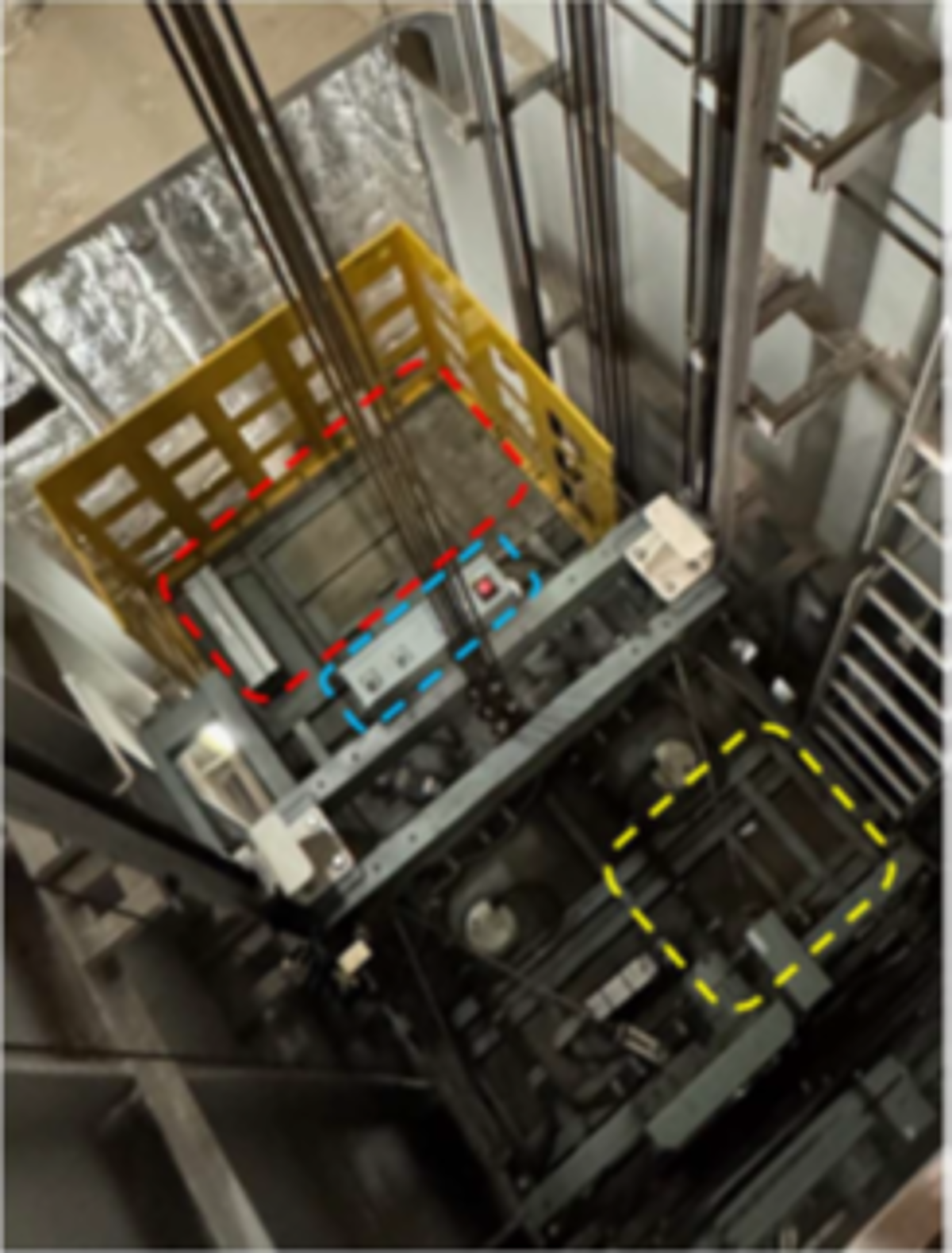Person fractured foot during elevator inspection
- Safety Flash
- Published on 29 April 2025
- Generated on 1 December 2025
- IMCA SF 08/25
- 2 minute read
Jump to:
During scheduled monthly inspections of an elevator on a large vessel, unplanned upwards movement of the elevator caused someone to get their foot to become stuck between the cage and the trunk ladder leading to a fractured foot.
What happened?
To conduct elevator inspections, it was necessary to access the top of the elevator cage and set the elevator to local service mode. To halt elevator movements and gain access to the top of the cage, the trunk doors at one level were opened, activating the elevator's interlocking mechanism.
As one worker was descending to the next level down to operate the local service mode switch, his colleague released the trunk doors, disengaging the interlocking mechanism and allowing the elevator to move normally. While the first worker was attempting to reach the service mode switch, the elevator moved, trapping their foot between the elevator cage and the trunk ladder steps. The injured person was unable to reach the local emergency stop as the elevator cage continued upwards.
It should be noted that during scheduled elevator inspections, it was necessary that all relevant equipment was ‘live’ to allow for testing.

Elevator cage top, with safe area (red), car junction box with operation switched (blue) and location of IP during incident.
What went wrong?
· No Toolbox Talk was conducted prior to starting the work.
· There was a manufacturer manual / procedure for this work. It was not followed.
· There was insufficient communication: activation of service mode was not confirmed or communicated between the workers / work parties.
Lessons learned
• Follow applicable procedures and Control of Work processes.
• Ensure adequate risk assessment / job safety analysis.
Related Safety Flashes
-
IMCA SF 06/19
5 April 2019
-
-
IMCA SF 13/01
1 November 2001
IMCA Safety Flashes summarise key safety matters and incidents, allowing lessons to be more easily learnt for the benefit of the entire offshore industry.
The effectiveness of the IMCA Safety Flash system depends on the industry sharing information and so avoiding repeat incidents. Incidents are classified according to IOGP's Life Saving Rules.
All information is anonymised or sanitised, as appropriate, and warnings for graphic content included where possible.
IMCA makes every effort to ensure both the accuracy and reliability of the information shared, but is not be liable for any guidance and/or recommendation and/or statement herein contained.
The information contained in this document does not fulfil or replace any individual's or Member's legal, regulatory or other duties or obligations in respect of their operations. Individuals and Members remain solely responsible for the safe, lawful and proper conduct of their operations.
Share your safety incidents with IMCA online. Sign-up to receive Safety Flashes straight to your email.